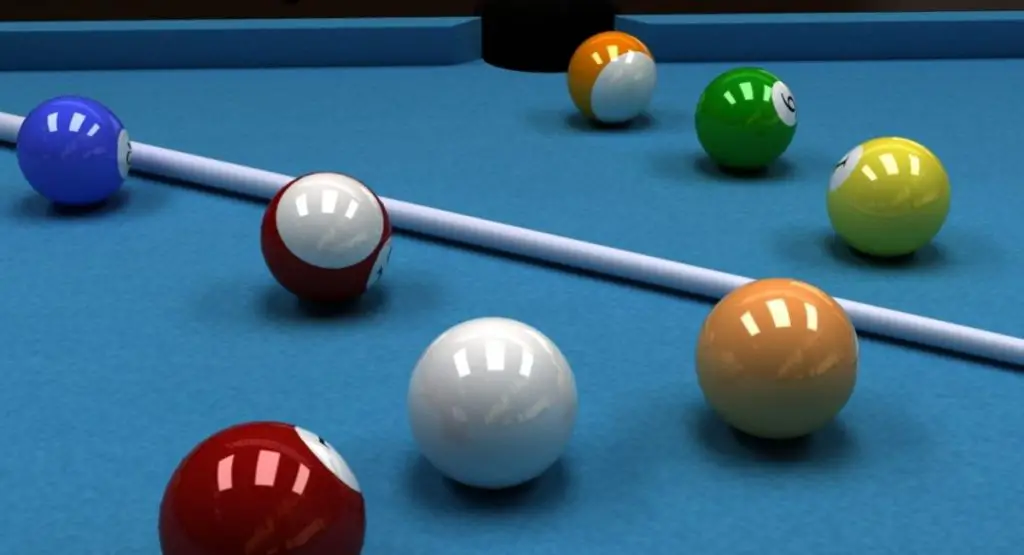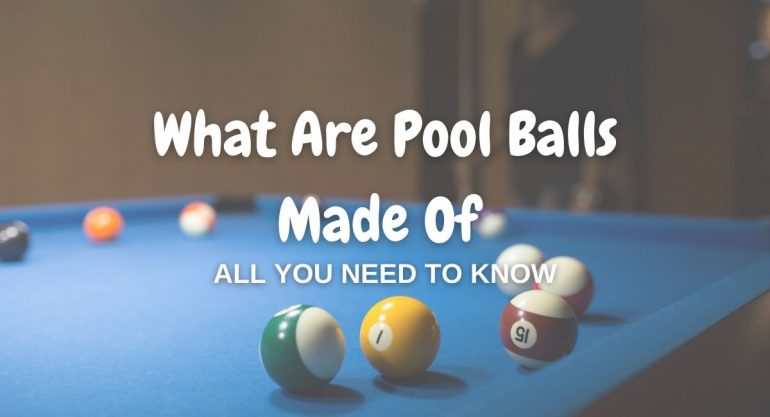If you enjoy a nice game of pool and you have a curious mind, then, sooner or later, you’ll want to peek behind the curtain to see just what makes the magic happen. Considering how important pool ball properties are to the game, you may find yourself asking what are pool balls made of?
Today, pool balls are predominantly made of synthetic materials such as phenolic resin and Bakelite. But, that wasn’t always the case. Billiard balls used to be made from everything from blocks of ivory to even celluloid and cellular material!
Here we’ll be looking at how ball makers have been able to change this essential aspect of the pool game and the different types of balls that were developed in the process!
Navigation Table
A Brief History of Pool Balls and the Game of Pool
Pool tables have been winning hearts and minds from the late 15th century into the early 16th century. However, the game didn’t gain much of the form we’re now familiar with until the 1920s.
It was also at this point that things like regulation size and the need for high-quality balls began to present themselves.
But long before this time, the preferred material of choice for pool balls was actually wood! The cheap material meant that a cheaper ball for players could be made.
However, as the colonization of Asia and Africa began, wooden balls were discarded as people wanted their billiard balls to be made of more exotic materials. That being said, that’s how ivory pool balls came into existence.
Ivory pool balls quickly evolved from being used to enjoy a game of pool to becoming a status symbol among the upper classes. Players who had balls made from this natural material were considered more elite. As a result, manufacturers saw a demand for these types of balls.
The beauty and recognition that came with having ivory pool balls, cue sticks, and walking sticks led to the depletion of the elephant population at an alarming rate. Since only elephant tusks could supply this preferred material, many wild elephants were hunted down at all costs in order to obtain it.
Over time, the high demand for elephant ivory and, by extension, ivory pool balls became unsustainable as mass production was impossible without the Asian and African elephant tusk.
Due to the shortage in tusks, a search for an alternative material quickly came underway. This was when the true revolution of billiards game balls and snooker balls started.

Advancement in Billiard Game Balls Production
Seeing the need for an artificial substance to use in place of ivory balls, the manufacturer of a pool table, Phelan and Collender, made a move in the late 19th century.
They offered a staggering reward of $10,000 to anyone who could make something that would successfully take the place of ivory billiard balls.
Their wide reach ensured that the ad got the attention of several inventors, one of which was John Wesley Hyatt. This was when celluloid balls came into existence.
While the invention of Wesley Hyatt didn’t win the grand prize, it’s remembered to this day as one of the first pool balls to be made of synthetic plastics.
Celluloid Billiard Balls
John Wesley Hyatt made these celluloid products by mixing camphor, alcohol, and nitrocellulose. Then, under extreme pressure, he molded these synthetic materials into the desired spherical shape. However, the finished product fell far short of ivory-made balls.
He also recorded several serious accidents during production of celluloid billiard balls because of the use of nitrocellulose. Since this wasn’t a stable compound, the molecular structure of the pool balls wasn’t sound.
Wesley Hyatt reported on many accounts that these balls could explode when struck with force. Consequently, this wasn’t something that anyone wanted on their billiard table!
Bakelite Pool Balls
The pool balls made today would be impossible without mentioning Leo Baekeland.
Phelan Leo Baekeland came along in the 19th century and gifted us with snooker balls made from a material that he called Bakelite. Regarded as the first plastic made from synthetic materials, these Bakelite pool balls were the long-awaited substitutes for balls made from raw tusks.
These balls lend themselves easily to mass production and had a consistency, density, and physical size that ensured they didn’t break or explode. The plastic compounds could also be given an exact spherical shape.
As such, in the mid-19th century, they quickly became the preferred material of choice for making pool balls. These high-quality billiard balls continued to be used until phenolic resin balls came along.
Phenolic Resin Balls
Phenolic resin pool balls are what grace most pool tables today! This is thanks in large part to a company named Saluc S.A.
Popular for feats of fine craftsmanship, like the Aramith Tournament Billiard Pool Ball Set and Aramith Phenolic Billiard Ball Care, this company has moved the pool game to where it is now.
It bears mentioning that phenolic resin balls are almost the same as Bakelite pool balls, but the only difference is that Saluc pool ball makers produce their balls under more pressure.
Combined with advanced art technology, the Aramith Tournament Billiard Pool Ball Set ranks among the best pool balls you can find today. This is because the color of each ball is dyed all the way through.
What’s more, after undergoing their patented heating-curing process, the high-quality billiard pool balls are able to withstand more pressure and become even more durable. This makes them better than several of the antique pool balls out there.
Conclusion
Now you know what pool balls are made of! We hope this knowledge helps you savor your experience even more the next time you hit the pool tables!
Feel free to broaden your knowledge of pool, as well as other fun games, by exploring our site’s many articles about pool, including:

